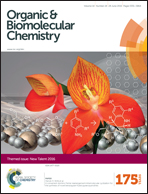In vivo imaging of advanced glycation end products (AGEs) of albumin: first observations of significantly reduced clearance and liver deposition properties in mice
Abstract
Advanced glycation end products (AGEs) are associated with various diseases, especially during aging and the development of diabetes and uremia. To better understand these biological processes, investigation of the in vivo kinetics of AGEs, i.e., analysis of trafficking and clearance properties, was carried out by molecular imaging. Following the preparation of Cy7.5-labeled AGE-albumin and intravenous injection in BALB/cA-nu/nu mice, noninvasive fluorescence kinetics analysis was performed. In vivo imaging and fluorescence microscopy analysis revealed that non-enzymatic AGEs were smoothly captured by scavenger cells in the liver, i.e., Kupffer and other sinusoidal cells, but were unable to be properly cleared from the body. Overall, these results highlight an important link between AGEs and various disorders associated with them, which may serve as a platform for future research to better understand the processes and mechanisms of these disorders.

- This article is part of the themed collection: New Talent

 Please wait while we load your content...
Please wait while we load your content...